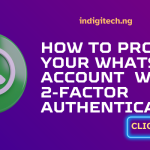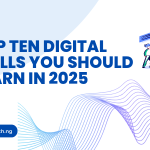No products in the cart.
Email marketing has become a well-known and effective tool in today’s tech-driven business world. It is no longer surprising to see how this simple strategy helps businesses connect with people and bring in wonderful results.
For beginners, the idea of starting with email marketing can feel a bit overwhelming. But with the right steps, you can easily learn how to use the tool in growing your audience, building genuine connections, and boosting your sales.
Below are some beginner-friendly steps to help you get started and succeed with email marketing.
Step 1: Setting Up Your Email List
Every successful email marketing journey begins with building an email list. Think of this as your community—a group of people who are genuinely interested in what you offer.
To start:
- Choose an Email Platform: Tools like Mailchimp, ConvertKit, or Brevo (Sendinblue) are beginner-friendly and easy to set up.
- Create a Simple Sign-Up Form: Add it to your website or social media pages to make it easy for people to subscribe.
- Offer Value: People are more likely to join your list if you give them something helpful in return, like a free guide, a discount, or exclusive tips.
This step sets the foundation for everything else. With a good list, you’re not just collecting emails, you’re building relationships with real people who want to hear from you.
Step 2: Crafting Your First Email
Your first email sets the tone for your relationship with your subscribers. It doesn’t need to be perfect, just authentic and welcoming.
- Write a Warm Welcome: Introduce yourself or your brand and let people know what kind of emails they can expect from you.
- Use Clear, Simple Language: Avoid jargon. Write like you’re talking to a friend.
- Add a Call to Action (CTA): Encourage readers to do something next, like visiting your website, following you on social media, or checking out a free resource.
Remember, your first email is about making a connection, not selling hard.
Step 3: Setting Up Automations
Automation saves you time and ensures your subscribers receive timely, relevant emails.
- Welcome Series: Automatically send a few emails to new subscribers introducing your brand and offering helpful tips.
- Follow-Ups: Send reminders or additional resources to people who clicked on a link but didn’t make a purchase.
- Segmentation: Group subscribers based on their interests so you can send them tailored content.
This might sound advanced, but most email platforms make automation easy to set up with drag-and-drop tools.
Step 4: Measuring Your Success
To know if your efforts are working, track key numbers:
- Open Rate: How many people open the mail?
- Click Rate: How many people click the links inside your mail?
- Conversions: How many people take action (like buying or signing up).
Most platforms provide these analytics automatically, helping you see what’s working and what needs improving.
Step 5: Keep Learning and Improving
Email marketing is not a one-time task—it’s an ongoing process.
- Test different subject lines to see what grabs attention.
- Experiment with sending times and email designs.
- Always listen to your subscribers’ feedback.
The more you practice, the better your results will get.
To sum it up,
Email marketing is one of the simplest yet most rewarding ways to connect with people online. Start small, stay consistent, and focus on providing value. Over time, you’ll not only grow your list but also build genuine relationships that can turn into loyal customers.
Discover more from Indigitech NG
Subscribe to get the latest posts sent to your email.




Aishat Ogunsetan
This is a business worth starting up.